Experimental Frenzy: Deckbuilding and the Scientific Method
EXPERIMENTAL FRENZY: SCIENTIFIC METHOD TO DECKBUILDING & WAR
War of the Spark has been with us on Arena for over two weeks now and all I keep hearing/reading on the Reddit boards, Facebook groups, Twitter feeds, and MTG devoted sites (such as this one at Aetherhub) is: “What is the Standard meta going to look like?” This to me is a somewhat redundant question and the easy answer is “We will know it when we see it”. In recent tournaments, it is clear that the inflatable Punch Me Clown that is Mono Red is not going anywhere anytime soon, nor is its half-brother Mono Blue Tempo. That said, Bant Nexus, Esper Control, and Mono White (Blue splash) Weenie are also extremely viable options for anyone looking to go competitive. That said, decks like Naya Feather, Mardu Aristocrats, Grixis Control, and Green/White Tokens are also emerging as contenders for the new meta. But my observation/question is: “Who really cares what the meta is?” With a new set, the onus should be on brewing and crafting your own unique decks or attempting to improve upon established Tier 1 decks. It’s all about applying the scientific method that we all learned in middle school and experimentation towards deckbuilding (hence the title of this article!).
So, let me let you into the cluttered headspace that is mine own: as I have said before, I am a middle school teacher, father of two, and a spouse of almost 12 years. Between work and home and chess commitments (I am a coach of the game, three-time state team champion coach actually!), my time towards MTG Arena is limited which means that my ability to craft new decks or attempt to improve upon established decks is also limited. That said, I do find time to watch YouTube videos on the game; Noxious, Merchant, AliasV, ThyrixSix, and MegaMogwai are my current top five and I do want to give a shout-out to AlwaysBoltTheBird, a smaller streamer who nevertheless has inspired me to craft some interesting decks. So the first step towards experimentation is two fold: get inspired and come up with a question. Some examples: can Ashiok, Dream Render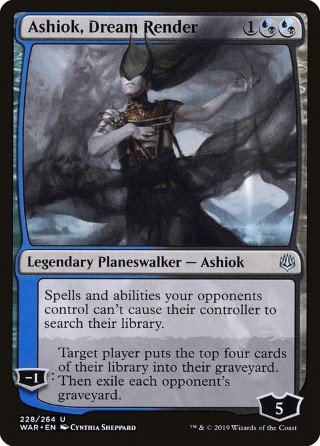 work in a Mono Blue deck?
work in a Mono Blue deck?
Second step: research. See if you can find statistics on the deck, granted it has only been out for two weeks, but I have found decks running Ashiok, albeit in more of a control setting. Third step: hypothesize. Can Ashiok work in an aggro build? In theory, he can. Fourth step: experiment! Build your Mono Blue deck around him. Use the tools already in place such as your Pteramander s, Curious Obsession
s, Curious Obsession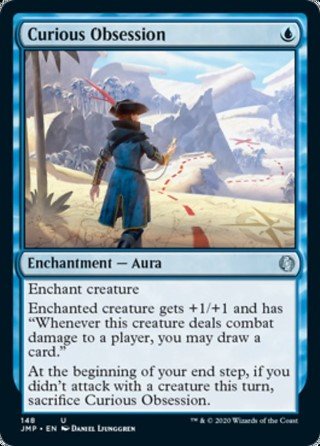 s, Merfolk Trickster
s, Merfolk Trickster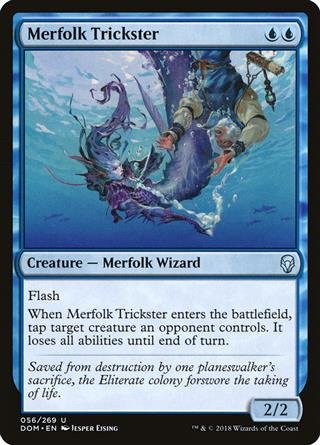 s, and so on and so forth. Does Ashiok work in this build? My first impression was, no not really. He added an element of disruption in terms of graveyard manipulation that the regular Mono Blue does not have. In order to put him in though, I had to give up some flexibility with counterspells such as Negate
s, and so on and so forth. Does Ashiok work in this build? My first impression was, no not really. He added an element of disruption in terms of graveyard manipulation that the regular Mono Blue does not have. In order to put him in though, I had to give up some flexibility with counterspells such as Negate and Spell Pierce
and Spell Pierce (which are in the sideboard), which are crucial to the Mono Blue archetype in keeping threats off the board. So, what I did was figure out how to keep the threats from coming onto the board before they even got there. I threw in Drowned Secrets
(which are in the sideboard), which are crucial to the Mono Blue archetype in keeping threats off the board. So, what I did was figure out how to keep the threats from coming onto the board before they even got there. I threw in Drowned Secrets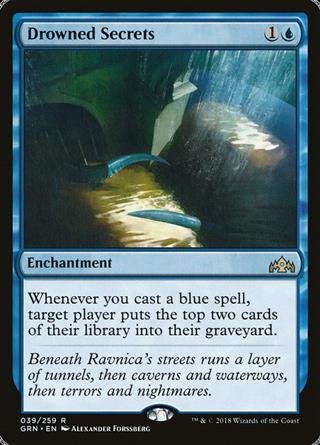 . Every time I cast a blue spell, two cards go into opponent’s graveyard. Ashiok takes care when he comes on board.
. Every time I cast a blue spell, two cards go into opponent’s graveyard. Ashiok takes care when he comes on board.
Fifth step: analyze and draw conclusions. I played many unrated matches before moving into ranked play. The deck performed surprisingly well in best of ones and it absolutely hosed Control decks with its graveyard disruption. Aggro was a bit more dodgy as we had to absorb hit after hit, but the eight counters we were running in Wizard’s Retort and Siren Stormtamer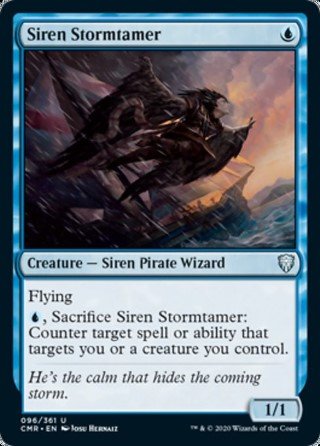 really came in handy. Midrange was our nemesis, once they stabilized after facing early damage from my Pteramanders, Mist-Cloaked Herald
really came in handy. Midrange was our nemesis, once they stabilized after facing early damage from my Pteramanders, Mist-Cloaked Herald s, and Siren Stormtamer
s, and Siren Stormtamer s. That said, we gave them a run for their money with Ashiok and the Secrets doing their job and denying them their removal before they even hit the board.
s. That said, we gave them a run for their money with Ashiok and the Secrets doing their job and denying them their removal before they even hit the board.
Sixth step: publish findings. Which I am doing right now. For future articles and deck write-ups, I will do my utmost to publish my findings about how the decks match up against others. It is imperative that, as Content Creators, we give our readers the best experience that they possibly can and by posting concise analysis (yes we may not have time) we can provide our readers with the best experience possible. Seventh step, and this is not in the scientific method but a step that is crucial nonetheless: HATERS ARE GONNA HATE! Ignore them and move on and keep doing what you do best. This is one area about the MTG community that I cannot stomach easily: “It’s not part of the meta/You’re messing with a perfectly good deck/That deck is not going to work due to x, y, and z., etc.” I am a casual player, I have very little aspirations to achieve pro status in this field. That said, I do like to hit Gold on my ranked play by season’s end when time allows.
My main point that I need to reiterate is this: with War of the Spark, the meta has not settled and therefore, deckbuilders should be using this as an opportunity to experiment with different combinations and different cards without hindrance from the past. That is how the game grows and how the game becomes better. When you are building decks, use the Scientific Method and have fun. Who cares whether your deck works or not the first time out? Tweak it and keeping tweaking until it is as perfect as humanly possible. And have fun. Always.
About Risendragon:
Married father of two, middle school history/English teacher with a passion for games.



